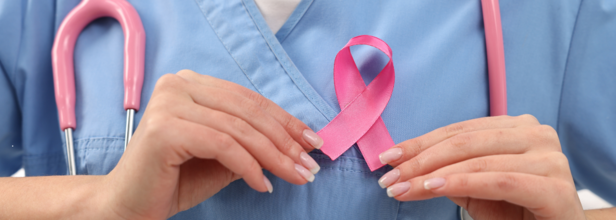
World Health Day 2025 Puts Maternal And Newborn Health In Focus- Know Theme And Significance
Every year on April 7, World Health Day commemorates the establishment of the World Health Organization (WHO) in 1948. But more than a symbolic date, it is a brazen call to tackle pressing global health challenges. In 2025, the focus has shifted toward an issue central to human development and survival—maternal and newborn health.
This year’s theme, “Healthy Beginnings, Hopeful Futures,” isn’t just a slogan—it signals the beginning of a year-long WHO-led campaign that prioritizes the well-being of mothers and babies. In a world where nearly 300,000 women die each year from pregnancy-related causes and over 2 million newborns don't survive their first month, the message is loud and clear: we must act now.
Mothers' and babies' health isn't a women's issue—it's a global, family, and community issue. A healthy start in life is the foundation for future prosperity and health. If a mother lives through childbirth, if her newborn baby survives that critical neonatal period, the ripple effect reverberates out to the rest of society. Healthy children grow up with their mothers, which builds healthier communities and economies.
However, the global data is still grim. WHO estimates suggest that one preventable maternal or newborn death occurs every 7 seconds. Worse, 4 out of 5 nations are off track to achieve maternal survival goals by 2030, and 1 in 3 are at risk of failing to meet newborn death reduction targets.
What Does 'Healthy Beginnings, Hopeful Futures' Mean?
The WHO's campaign in 2025 will be aimed at preventing not just deaths but also making health systems more robust, pushing for equity, and providing women and newborns with quality care before, during, and after birth.
Important goals of this year's campaign are:
- To advocate for eliminating preventable newborn and maternal deaths
- To push for equitable access to quality care, particularly in rural and under-served areas
- Building postnatal care infrastructure, especially within the first 24 hours following childbirth—the time when the majority of maternal and newborn deaths are most likely to happen
- Facilitating mental health and noncommunicable disease care during the perinatal period
- Fostering inclusive laws and policies that protect women's health and rights
Understanding the Challenges
Consider India, for instance—a country that has progressed incredibly but continues to have mountainous challenges to overcome. India's maternal mortality ratio fell from 130 to 97 per 100,000 live births between 2014 and 2020. Yet the country still has 17% of all stillbirths and maternal deaths worldwide, a stark reminder of how much there is to be done.
In rural and disadvantaged communities, the availability of healthcare workers, postnatal care facilities, and emergency obstetric care remains very limited. A great number of infant deaths are due to preventable conditions such as sepsis, birth asphyxia, and conditions arising from preterm birth. Socioeconomic inequalities worsen these conditions, with women in poorer families frequently having no access to even basic maternal care.
What Needs to Change?
Enhancing newborn and maternal health is more than constructing hospitals—it's a matter of envisioning healthcare delivery systems that are sustainable, equitable, and women-focused.
That means:
- Increasing antenatal and postnatal care coverage to at least 80% as recommended by the WHO
- Training and mobilizing skilled birth attendants in underserved areas
- Establishing mother-supportive environments, such as clean water, adequate sanitation, and nutrition access
- Synchronizing mental health services with maternity care
- Securing policy-level protection by way of maternity benefits, parental leave, and anti-discrimination laws
Furthermore, health systems should also be in a position to handle indirect determinants of maternal death, like hypertension, diabetes, and mental illnesses, which are all underdiagnosed.
India's Pradhan Mantri Surakshit Matritva Abhiyan (PMSMA) and National Health Mission (NHM) have played a significant role in providing free monthly check-ups and institutional births. Programs such as Janani Suraksha Yojana (JSY) offer incentives to poor mothers to deliver safely.
Internationally, some areas such as Latin America and the Caribbean have already achieved WHO's goal of postpartum care coverage of 80%—serves as models that can be followed and replicated.
This year's theme also acknowledges that health is not born in clinics. It is a result of underlying human rights—education, decent shelter, wholesome food, clean air, and protection from violence and discrimination.
Policies that make women economically and socially empowered are as essential as policies for medical care. Whether legal protections for maternal leave or investing in girl child education, each move makes a difference to healthier generations.
Listening to Women, Supporting Families
At the center of this campaign is a crucial message—listen to women. Women require care that is respectful, compassionate, and inclusive. That means acknowledging the role of partners and families, supporting fathers, and providing community-based solutions that are responsive to cultural and socioeconomic settings.
Healthcare professionals, policymakers, and world leaders need to make listening to women's voices a priority, learn from their experiences, and co-create solutions that are effective on the ground.
As World Health Day 2025 unfolds, it calls on all of us—governments, health workers, communities, and individuals—to pledge ourselves to the health and dignity of mothers and newborns. Because when we invest in healthy beginnings, we create hopeful futures—not only for individuals, but for generations to come.

Credit: Canva
New Progesterone Device Offers Hope To Women Facing Threatened Miscarriages
UK health authorities are testing a groundbreaking device that is designed to improve the way progesterone is absorbed in women at risk of miscarriage. Named Callavid, the small, tampon-shaped device could soon replace the current use of vaginal pessaries, which are often uncomfortable and messy, in administering this vital hormone.
Why Is Progesterone Important?
Progesterone plays a crucial role in early pregnancy, helping to prepare and support the womb for a growing baby. For women who have previously experienced miscarriage and early bleeding in subsequent pregnancies, progesterone treatment is recommended. However, the current delivery method is far from ideal—prone to leakage and often uncomfortable—leaving many women feeling distressed during an already anxious time.
That is where Callavid comes in. Developed by Calla Lily Clinical Care, the device is designed to deliver progesterone more effectively and with greater comfort. Experts hope it could significantly ease the emotional and physical burden faced by thousands of women every year. "At a time when women are going through one of the most distressing moments of their lives, we want to offer something that feels dignified, supportive, and effective," said Lara Zibners, co-founder of Calla Lily Clinical Care. She called the recent £1 million funding from the National Institute for Health and Care Research a major step forward. The grant will allow the device to enter in-person trials, moving it closer to being widely available for use.
Over 1, 00,000 Women Could Benefit
University Hospitals Coventry and Warwickshire (UHCW) NHS Trust is leading the clinical trial. According to their estimates, more than 150,000 women in the UK could benefit from this alternative method of progesterone delivery.
Beyond the emotional impact, the innovation also holds promise for reducing costs to the healthcare system. Current methods are not only inefficient for some women but also contribute to an estimated £236 million annual burden on the NHS, according to health economists.
ALSO READ: What Happens To Your Body When You Quit Carbs For 7 Days
Professor Siobhan Quenby, a specialist in obstetrics and reproductive health at UHCW, emphasised the broader importance of the trial. “We know how frightening and heartbreaking it can be to experience early bleeding in pregnancy, especially for those who have experienced miscarriage before,” she said. “Through this innovation, one which is being pioneered right here in the UK, I believe there is potential to transform women's experiences—not just physically, but emotionally too.”
More Research Is Needed
While more research and testing are needed before Callavid becomes widely available, the early promise it shows is encouraging. With progesterone therapy being such a vital component of care for women at risk of miscarriage, a more efficient and compassionate delivery method could not only improve clinical outcomes but also bring some peace of mind during a deeply vulnerable time.As trials progress, both healthcare professionals and women alike are watching with hope that Callavid might soon become a new standard in early pregnancy care.
ALSO READ: Peripartum Cardiomyopathy: What Kills Women During Childbirth?

RFK Jr. Says New HHS Research Could Solve ‘Autism Epidemic’ By September- Could This Change Treatment?
Stirring another debate across the global medical and scientific communities, U.S. Health and Human Services Secretary Robert F. Kennedy Jr. has announced an ambitious plan to pinpoint the root cause of what he calls the nation’s “autism epidemic” by September. Framing it as a top priority of the Trump administration’s “Make America Healthy Again” initiative, Kennedy says a massive international research effort is now underway, involving “hundreds of scientists from around the world.”
But could this initiative truly revolutionize autism treatment and prevention—or is it based on scientifically shaky ground?
Speaking at a cabinet meeting alongside President Donald Trump, Kennedy claimed that the HHS-led research campaign would “determine what has caused the autism epidemic” and ultimately “eliminate those exposures.”
According to the CDC, autism spectrum disorder (ASD) now affects about 1 in 36 children in the U.S.—a sharp increase from 1 in 150 in the year 2000. Kennedy suggested the current figure may already be closer to 1 in 31.
President Trump, echoing Kennedy’s concerns, remarked, “There’s got to be something artificial,” suggesting the answer may lie in a product we consume or an injection we receive. The implication is clear: Kennedy's administration may be eyeing food, environmental factors—or even vaccines—as potential contributors.
This isn’t the first time Kennedy has drawn attention for his views on vaccines. In a now-retracted 2005 article, he implied a link between childhood vaccines and autism—claims that have been debunked repeatedly by leading health organizations, including the CDC and WHO.
While Kennedy insists he is “pro-safety” rather than anti-vaccine, he has declined to definitively rule out a vaccine-autism link, instead insisting that “good science” must lead the way. During his Senate confirmation hearings, he refused to unequivocally declare that vaccines like those for measles or hepatitis B do not cause autism—unless “the data was there.”
That hesitation continues to fuel concerns within the scientific community, especially as Kennedy now investigates the CDC’s childhood vaccine schedule and seeks access to sensitive vaccine safety data from federal systems like VAERS (Vaccine Adverse Event Reporting System).
The prevailing medical consensus remains firm: vaccines do not cause autism.
Multiple large-scale studies have failed to find a causal connection between autism and vaccinations, including those that contain thimerosal, a mercury-based preservative once cited by skeptics. The National Institute of Environmental Health Sciences (NIEHS), part of the NIH, maintains that no credible scientific link exists.
Instead, researchers point to a more complex interplay of genetic and environmental factors in autism’s etiology. These may include advanced parental age, prenatal exposure to air pollution or pesticides, and genetic mutations that influence brain development. Moreover, improved diagnostic criteria, earlier screening, and heightened awareness have contributed to increased detection.
Kennedy’s timeline—promising conclusive results by September—has drawn sharp criticism from autism advocacy organizations, scientists, and disability rights groups.
The Autistic Self Advocacy Network (ASAN) dismissed the plan as fundamentally flawed. “Real science does not move that quickly,” the group said in a statement. “Kennedy’s conviction that he has already found the answer demonstrates his disregard for the scientific method.”
Zoe Gross, director of advocacy at ASAN, added that Kennedy’s emphasis on “eliminating exposures” reveals a troubling bias toward predetermined outcomes. “It really is giving the game away,” she said.
Meanwhile, the Autism Society of America warned against misleading claims. “We need more rigorous, science-based research—not speculation, less transparency, or oversimplified timelines,” they said, citing concerns about who is leading the effort and what methodology is being applied.
The internal shakeup at the FDA offers further insight into the growing tensions between Kennedy’s office and established regulatory authorities. Dr. Peter Marks, former director of the FDA’s Center for Biologics Evaluation and Research, resigned after reportedly resisting pressure from Kennedy’s team to grant full access to VAERS. Marks feared that data could be manipulated, according to interviews with the Associated Press.
Despite these tensions, the National Institutes of Health (NIH) confirmed that it is cooperating with HHS to investigate autism's causes, citing a “national imperative” to uncover the truth behind rising ASD rates. However, the NIH also emphasized that it remains committed to using only “gold-standard, evidence-based science.”
Could This Affect Autism Treatment?
In theory, identifying environmental or lifestyle triggers for autism could open new frontiers for early intervention and prevention. If Kennedy’s research initiative reveals any previously unknown risks—validated by independent peer-reviewed studies—it could potentially shape future policies, healthcare guidance, and even parental decision-making during pregnancy and early childhood.
However, that optimistic scenario hinges on the research being conducted with full transparency, rigorous peer review, and alignment with established scientific standards—none of which, critics argue, are currently in place.
RFK Jr.’s bold promise to crack the code of autism by September is attention-grabbing, but it comes with a long shadow of controversy. With rising autism rates, families are desperate for answers. But as science has shown time and again, real answers take time—and cutting corners in the pursuit of truth often leads to misinformation, misplaced blame, and deeper public mistrust.

Credits: Canva
Know All About The Recently Approved Landmark Breast Cancer Drug In UK
Breast cancer is one of the most common cancers in the world, affecting millions of women every year. It begins when cells in the breast grow uncontrollably, often forming a lump or mass. There are several types of breast cancer, classified based on the presence or absence of hormone receptors or certain proteins that influence cell growth.
One of the most common forms is HR-positive, HER2-negative breast cancer. “HR-positive” means the cancer cells grow in response to hormones like estrogen or progesterone, while “HER2-negative” indicates the cancer does not produce excess amounts of the HER2 protein. This subtype accounts for a significant percentage of breast cancer cases and can be difficult to treat, especially in advanced stages when it spreads beyond the breast to other parts of the body.
A Landmark Moment: Capivasertib Approved for NHS Use
In a major step forward, a new drug named capivasertib has been approved for use in the UK’s National Health Service (NHS). Developed by pharmaceutical company AstraZeneca, the drug is also marketed as Truqap. This oral medication offers fresh hope to patients battling incurable forms of breast cancer, particularly those with specific genetic mutations.
The approval by the National Institute for Health and Care Excellence (NICE) has been hailed as a “landmark moment” by researchers. According to NICE, more than 1,000 women each year with HR-positive, HER2-negative breast cancer in advanced stages could benefit from this new treatment.
How Does the Drug Work?
Capivasertib is taken as a twice-daily pill, in combination with the hormone therapy fulvestrant. The drug works by blocking an abnormal protein—a part of the cancer cell’s signaling system—that tells the cells to multiply. By disrupting this signal, capivasertib slows or halts the progression of the disease.
In a clinical trial, the combination of capivasertib and fulvestrant was shown to delay cancer progression by approximately 4.2 months compared to patients who received a placebo and fulvestrant. This delay in disease progression could mean more time before needing chemotherapy and its often difficult side effects.
The Role of Genetic Mutations
About half of the patients with this form of breast cancer have mutations in certain genes, which make them more likely to respond to capivasertib. These mutations can be detected through genetic testing, which helps doctors decide the most effective course of treatment for individual patients.
How to Get Checked?
Early diagnosis remains key in managing breast cancer. Women are advised to regularly perform self-exams, attend routine screenings such as mammograms, and report any unusual symptoms to a doctor. For those diagnosed with HR-positive, HER2-negative cancer, genetic testing may be recommended to check for mutations that would qualify them for treatment with capivasertib.
A Decade-Long Research Journey
The approval of capivasertib is the result of decades of research by scientists at the Institute of Cancer Research (ICR) in London. Kristian Helin, CEO of ICR, called the development a “triumph,” noting the drug’s potential to improve treatment outcomes for many patients.
As of 2020, over 40,000 people were diagnosed with breast cancer in the UK, with nearly 15% already at advanced stages. For them, this drug could represent both hope and more time.
© 2024 Bennett, Coleman & Company Limited



